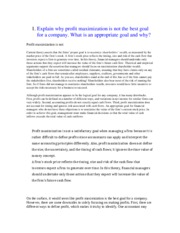

The standardization can be done by partially skimming the fat in the milk or admixing skim milk in proper proportions. Under the FSSAI rules, the standardized milk should contain a minimum of 4.5% fat and 8.5% is milk a compound SNF. Milk is a whole, clean, lacteal secretion obtained by the complete milking of healthy milch animals, properly fed and kept, excluding that obtained within 15 days before and 5 days after calving.

If you too have been mixing milk and banana together, it’s time you wait and stop. “The combination of milk and banana is heavy and it takes a long time to digest, and you will also feel fatigued,” says Dr Moon. Therefore, these two nutritious ingredients can be safely enjoyed individually as a part of a healthy and balanced diet.
Vitamins A, B6, B12, C, D, K, E, thiamine, niacin, biotin, riboflavin, folates, and pantothenic acid are all present in milk. In the Western world, cow’s milk is produced on an industrial scale and is, by far, the most commonly consumed form of milk. Commercial dairy farming using automated milking equipment produces the vast majority of milk in developed countries.
Explore Other Food Features:
It can be made from milk and lime, generally with pigments added for color. In other recipes, borax is mixed with milk’s casein protein in order to activate the casein and as a preservative. To “milk” someone, in the vernacular of many English-speaking countries, is to take advantage of the person, by analogy to the way a farmer “milks” a cow and takes its milk. In the 19th century, milk was used to describe a cheap and very poisonous alcoholic drink made from methylated spirits mixed with water. Milk is used to make yogurt, cheese, ice milk, pudding, hot chocolate and french toast, among many other products.
Once the molecule is cleaved, there are no lactose ill effects. Forms are available with reduced amounts of lactose (typically 30% of normal), and alternatively with nearly 0%. The only noticeable difference from regular milk is a slightly sweeter taste due to the cleavage of lactose into glucose and galactose. Lactose-reduced milk can also be produced via ultra filtration, which removes smaller molecules such as lactose and water while leaving calcium and proteins behind. Milk produced via these methods has a lower sugar content than regular milk.
It differs greatly from normal milk in composition and properties. One highly distinctive characteristic is the high content of whey proteins – about 11 % compared to about 0.65 % in normal milk, as shown in Figure 2.47. A fairly large proportion of whey protein is immunoglobulins , which protect the calf from infection until its own immune system has been established. Colostrum has a brownish-yellow colour, a peculiar smell and a rather salty taste. Four to five days after calving, the cow begins to produce milk of normal composition, which can be mixed with other milk.
- Above 135 °C, the proteins deposited on the fat globule membrane form a network that makes the membrane denser and less permeable.
- At temperatures above 100 °C, a reaction takes place between lactose and protein, resulting in a brownish colour.
- The enzymes involved in these reactions act in a certain order.
- A solution is a liquid that has been dissolved in another material.
Milk from grass-fed or pastured cows provides more beneficial fats and higher amounts of some vitamins. Cow’s milk has a higher amount of lactose than milk from other animals. A 2015 review estimates 65 to 70 percent of the world’s population has some form of lactose intolerance. Most people with this condition can safely add small amounts of dairy to their diet. Excess calcium from milk and other foods may increase the risk of prostate cancer. Milk sugars may be linked to a slightly higher risk of ovarian cancer.
Reduction or elimination of lactose
The chemical composition of vitamins is usually very complex, but that of most vitamins is now known. Vitamins are designated by capital letters, sometimes followed by numerical subscripts, e.g. Lactose is water soluble, occurring as a molecular solution in milk. In cheese making, most of the lactose remains dissolved in the whey.
From nutrition point of view milk is the most neatly perfect food available to us. The body needs more than thirty distinct materials in its food supply. No single foodstuff supplies all of them but milk supplies nearly all.
When microorganisms are flocculated, their growth and action can be significantly inhibited. When milk is heated, some of the whey proteins denature and form complexes with casein, thereby decreasing the ability of the casein to be attacked by rennet and to bind calcium. Curd from milk heated to a high temperature will not release whey as ordinary cheese curd does, due to the smaller number of casein bridges within and between the casein molecules.
The symbol pH is used to denote the hydrogen ion concentration. When a base is added to water, it forms a basic or alkaline solution. When the base dissolves it releases hydroxide (OH–) ions. When milk and cream turn to butter, there is a phase inversion from an oil-in-water emulsion to a water-in-oil emulsion.

Milk is formed from blood, the two being separated by a permeable membrane, hence they have the same osmotic pressure; in other words, milk is isotonic with blood. The osmotic pressure of blood is remarkably constant although the composition, as far as pigment, protein, etc. are concerned, may vary. The same condition applies to milk, with the total osmotic pressure as shown in Table 2.10. The solubility of calcium phosphate is very temperature-dependent. Unlike most compounds, the solubility of calcium phosphate decreases with temperature.
A pure substance is made up of one kind of particle with constant structure, these structures are further divided into elements and compounds. It has a definite set of properties such as boiling point, melting point, and density. Mammals to nourish their young for a period beginning immediately after birth. The milk of domesticated animals is also an important food source for humans, either as a fresh fluid or processed into a number of dairy products such as butter and cheese.
In honor of Pasteur, the process became known as “pasteurization”. Pasteurization was originally used as a way of preventing wine and beer from souring. Commercial pasteurizing equipment was produced in Germany in the 1880s, and producers adopted the process in Copenhagen and Stockholm by 1885.
Milk as such, derived from the animals without altering the composition is termed as whole milk. When the milk is from cow it is known as cow milk and that from buffalo is known as buffalo milk. The minimum requirements of fat and S.N.F. for these milks have been fixed by FSSAI for different states and union territories.
Sources
A2 milk distributers market their product as beneficial for adults, children, and infants who experience milk intolerances, whether from milk allergy or lactose intolerance. Symptoms of these conditions include gas, bloating, constipation, or diarrhea. WeightContrary to widespread belief, research does not support that milk helps with weight control. The composition of milk may differ depending on the breed and feed of the cows. Colloids- It is a mixture where one of the substances is split into very minute particles which are dispersed throughout a second substance. Suspensions- It is a heterogeneous mixture in which the solid particles are spread throughout the liquid without dissolving in it.
Therefore only limit values can be stated for the variations. The rate of diffusion depends on particle velocity, which in turn depends on the temperature, the size of the particles, and the difference in concentration between various parts of the solution. Sugar dissolving in a cup of coffee is an example of diffusion. The sugar dissolves quickly in the hot drink, and the sugar molecules diffuse until they are uniformly distributed in the drink. When lactose is dissolved in water, no important changes occur in the molecular structure of the lactose. Positive and negative ions are always present at the same time; i.e. in solutions as cations and anions or in solid form as salts.
Titratable acidity
Even though it contains several components, these are all evenly distributed throughout the mixture and cannot be seen by the naked eye. In science, a homogeneous mixture is a mixture in which constituents are distributed entirely so it’s the same throughout. The percentage of fat isn’t definite between one milk to another. There are various types of milk based on its fat content. Since milk is water with tons of stuff floating around in it, which can be separated from the liquid without breaking chemical bonds, it is not a compound. A colloid is like an in-between a solution and a suspension.
Is milk considered a heterogeneous mixture?
Dairy cattle, such as the Holstein, have been bred selectively for increased milk production. About 90% of the dairy cows in the United States and 85% in Great Britain are Holsteins. Other dairy cows in the United States include Ayrshire, Brown Swiss, Guernsey, Jersey and Milking Shorthorn . In 1863, French chemist and biologist Louis Pasteur invented pasteurization, a method of killing harmful bacteria in beverages and food products. He developed this method while on summer vacation in Arbois, to remedy the frequent acidity of the local wines.


